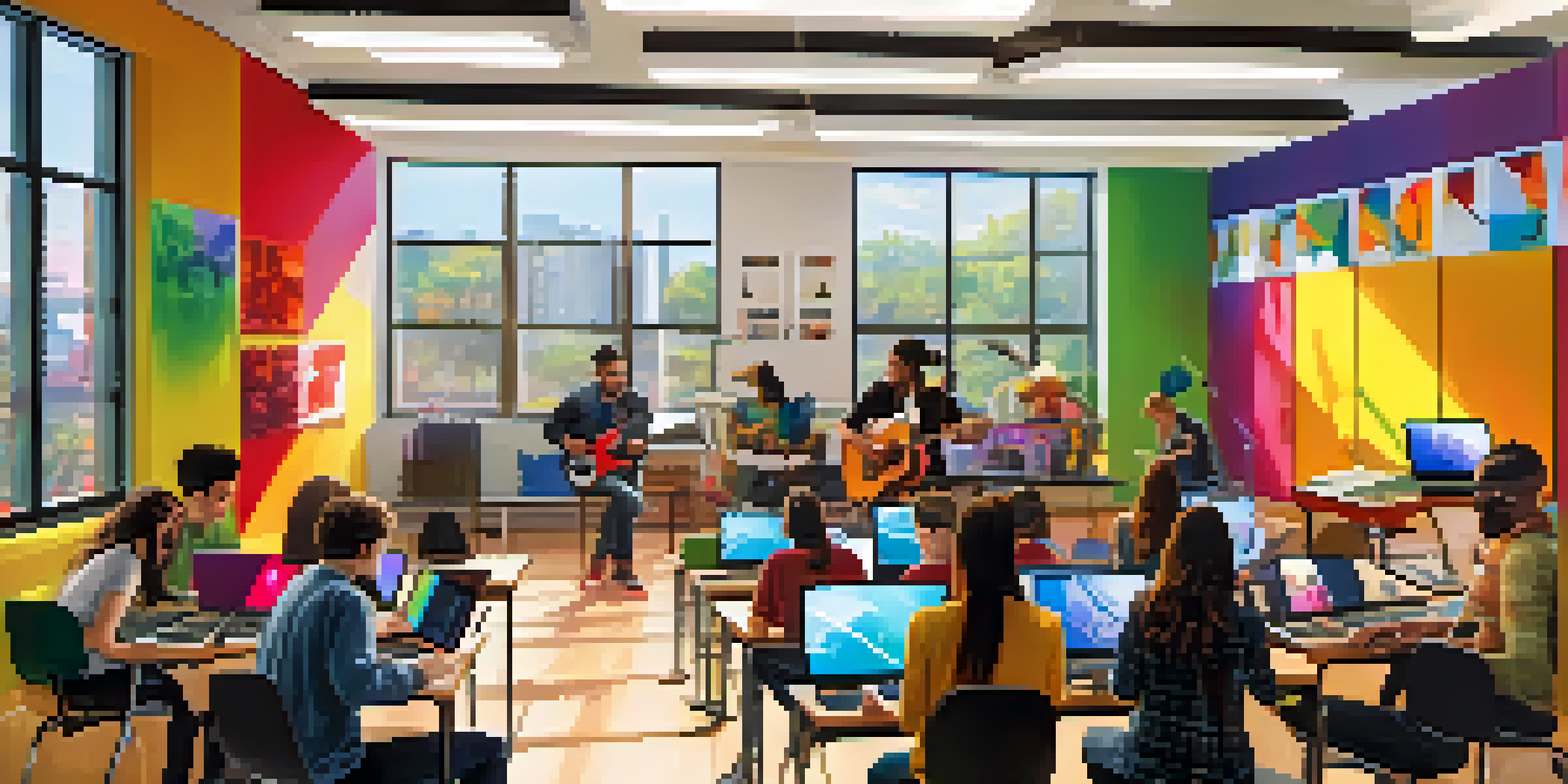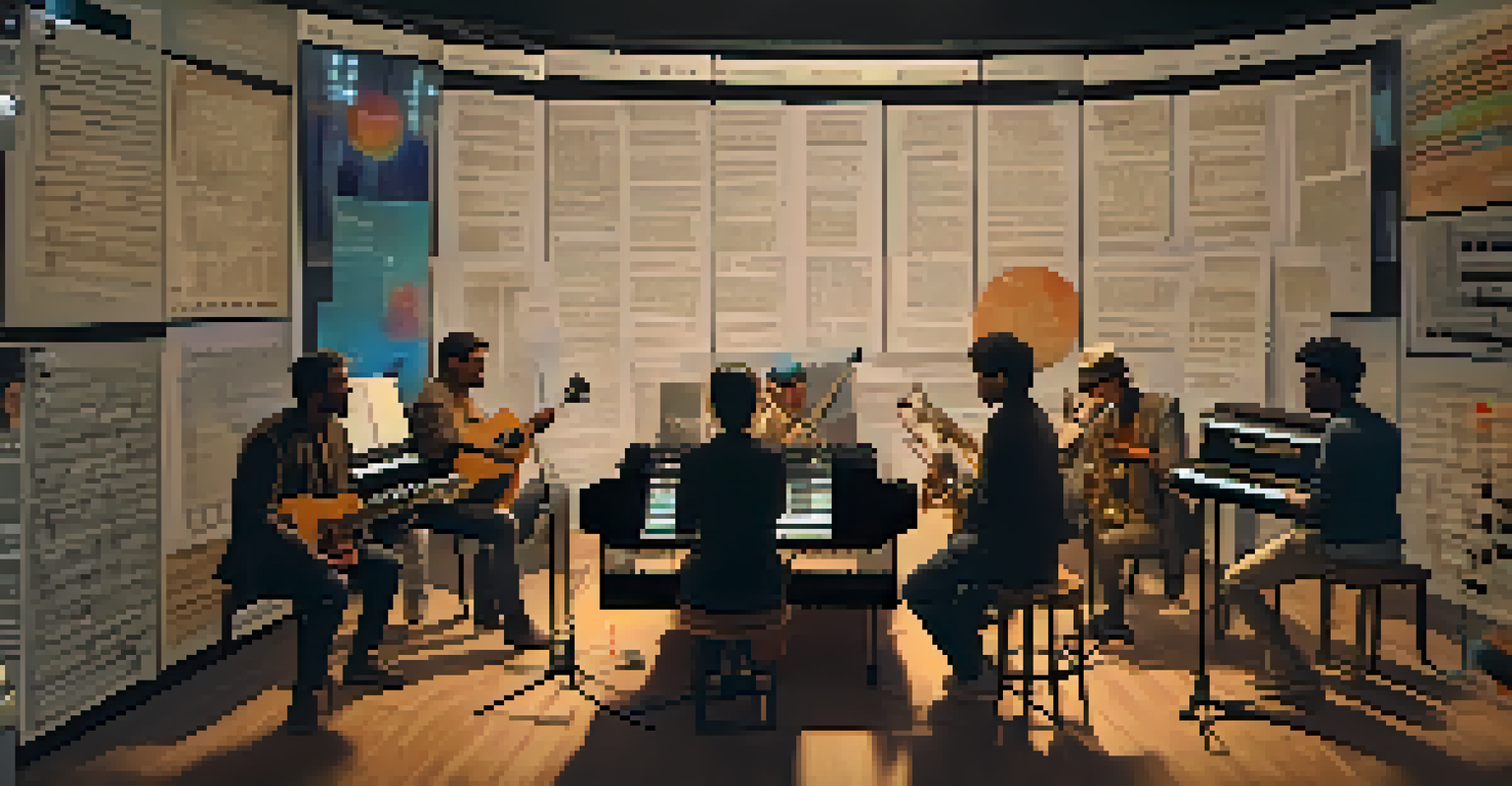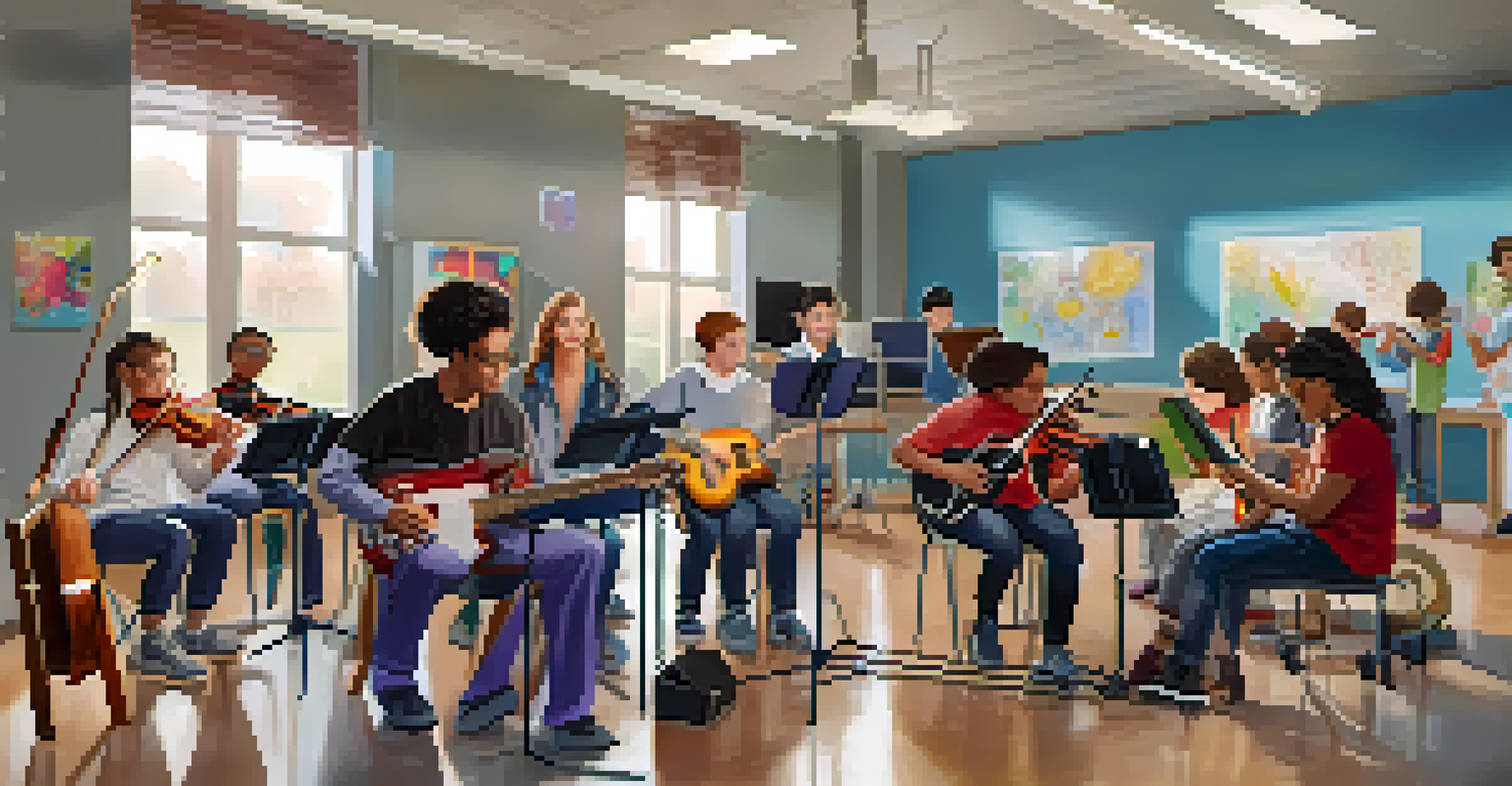The Role of Technology in Modern Music Education Policies

Introduction to Technology in Music Education
In today's digital age, technology has become an integral part of music education. It's reshaping how students learn, teachers instruct, and institutions develop their curricula. Imagine a classroom where students can compose music using software, collaborate online, and receive instant feedback from educators, all thanks to technological advancements.
Technology is best when it brings people together.
Music education policies are evolving to incorporate these digital tools, making learning more engaging and accessible for students. For example, many schools are now adopting platforms that allow for remote learning, providing students with the flexibility to explore their musical interests from home. This shift not only broadens access but also encourages a diverse range of music styles and genres.
As we delve deeper into the role of technology in music education, we’ll uncover how it influences teaching methods, student engagement, and overall learning outcomes. By understanding these changes, educators can better adapt their approaches to meet the needs of today's students.
The Rise of Digital Tools in Music Learning
Digital tools, such as music production software and online resources, have transformed music learning. Students can now experiment with sound creation, editing, and mixing in ways that were previously unimaginable. This hands-on approach not only enhances creativity but also builds essential skills for the future.

Moreover, platforms like YouTube and various apps provide students with access to a wealth of tutorials and lessons, making learning more self-directed. Picture a student learning to play guitar by following a step-by-step video guide, or learning music theory through interactive games. The possibilities are endless, and students are more engaged than ever.
Technology Enhances Music Learning
Digital tools and online resources have transformed music education, allowing for greater creativity and self-directed learning.
These digital tools are not just supplementary resources; they are becoming central to music pedagogy. As schools adopt these technologies, music education policies must reflect these changes to ensure that all students have the opportunity to thrive in a tech-enhanced learning environment.
Fostering Collaboration Through Online Platforms
One of the most exciting aspects of technology in music education is its ability to foster collaboration. Online platforms enable students to work together, regardless of geographical barriers. Imagine a group of musicians from different countries creating a piece of music together in real-time, sharing ideas and styles as they go.
The future belongs to those who believe in the beauty of their dreams.
This collaborative spirit not only enhances learning but also prepares students for the music industry's reality, where teamwork is vital. Music education policies are beginning to recognize the importance of collaboration, encouraging schools to implement projects that facilitate joint efforts, whether through virtual jam sessions or online composition competitions.
By embracing technology's collaborative potential, educators can create a more inclusive and dynamic learning environment. This not only enriches the educational experience but also mirrors the interconnected world we live in, where collaboration is key to innovation.
Enhancing Accessibility in Music Education
Technology has made music education more accessible than ever before. Students with disabilities, for instance, can now utilize adaptive software that caters to their specific needs, allowing them to engage with music in ways that were once challenging. This inclusivity is a significant step forward in ensuring that all students can participate in music education.
Additionally, online courses and resources break down geographical and financial barriers, making it easier for students from various backgrounds to access quality education. For example, a student in a remote area can enroll in an online music course taught by an expert from a major city, expanding their educational opportunities.
Collaboration Breaks Geographical Barriers
Online platforms foster collaboration among students worldwide, mirroring the teamwork essential in the music industry.
As music education policies evolve, they must prioritize accessibility, ensuring that every student has the chance to explore their musical passions. By doing so, we create a richer, more diverse musical landscape that benefits everyone.
Innovative Assessment Methods in Music Education
The integration of technology also brings about innovative assessment methods in music education. Traditional assessment can sometimes fall short in capturing a student's true musical abilities. However, with technology, educators can utilize digital portfolios, video recordings, and online assessments that provide a more comprehensive view of a student's progress and creativity.
For example, students can submit recordings of their performances or compositions online, allowing teachers to provide feedback in real-time. This not only enhances the learning experience but also encourages students to take ownership of their musical journey, as they can see their growth over time.
As music education policies adapt to these assessment innovations, they promote a more holistic approach to evaluating student performance. This shift is crucial in nurturing a new generation of musicians who are not only skilled but also confident in their abilities.
The Role of Educators in a Tech-Driven Landscape
As technology becomes more prevalent in music education, the role of educators is evolving. Teachers are now expected to not only impart knowledge but also guide students in navigating the digital landscape. This requires ongoing professional development and training to stay updated on the latest tools and resources available.
Moreover, educators must foster an environment where technology is used to enhance creativity rather than replace traditional methods. Think of a teacher who combines digital music software with hands-on instrumental lessons, providing a well-rounded education that prepares students for modern music challenges.
Innovative Assessments Support Growth
Technology enables more comprehensive assessments, allowing students to showcase their progress through digital portfolios and recordings.
Music education policies should reflect this shift, supporting educators in their professional growth and ensuring they have the resources needed to succeed. By empowering teachers, we can create a robust learning environment that inspires students to explore their musical potential.
Future Trends in Music Education Technology
Looking ahead, the future of music education technology is incredibly promising. Emerging trends, such as artificial intelligence and virtual reality, are beginning to make their way into the classroom. Imagine a student being able to practice with a virtual band or receive tailored feedback from an AI-driven music tutor.
These advancements could revolutionize how music is taught and learned, making it more engaging and personalized. As policies evolve, educators will need to integrate these technologies thoughtfully, ensuring they complement traditional learning methods.

By anticipating these future trends, music education can remain relevant and impactful. As we embrace technology’s potential, we can inspire a new generation of musicians who are innovative, adaptable, and ready to shape the future of music.